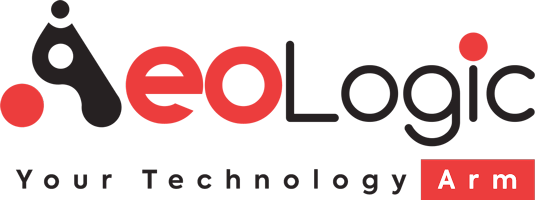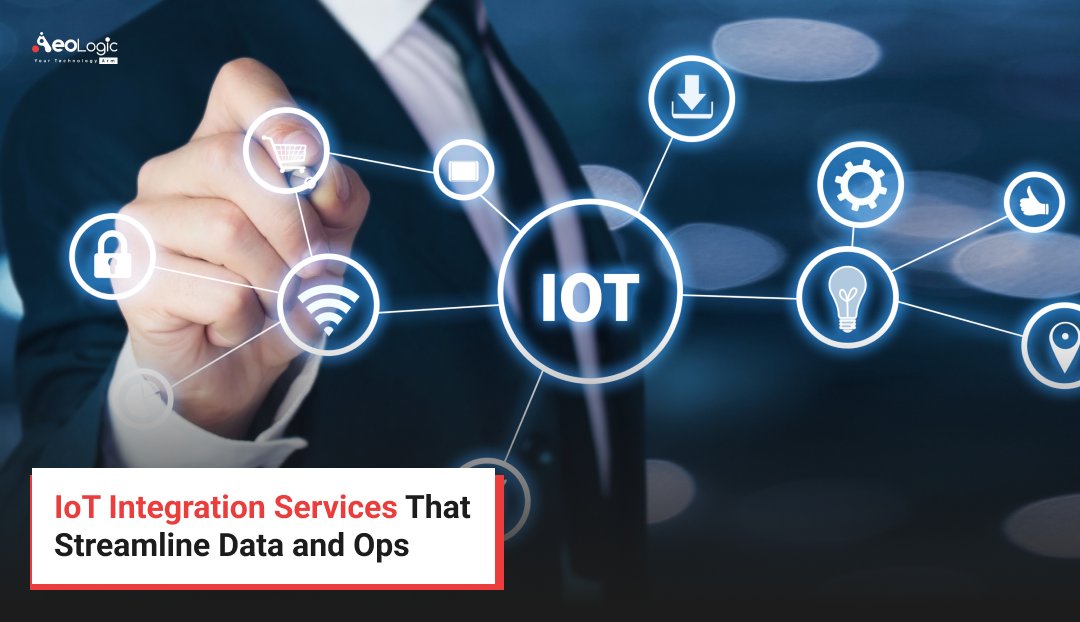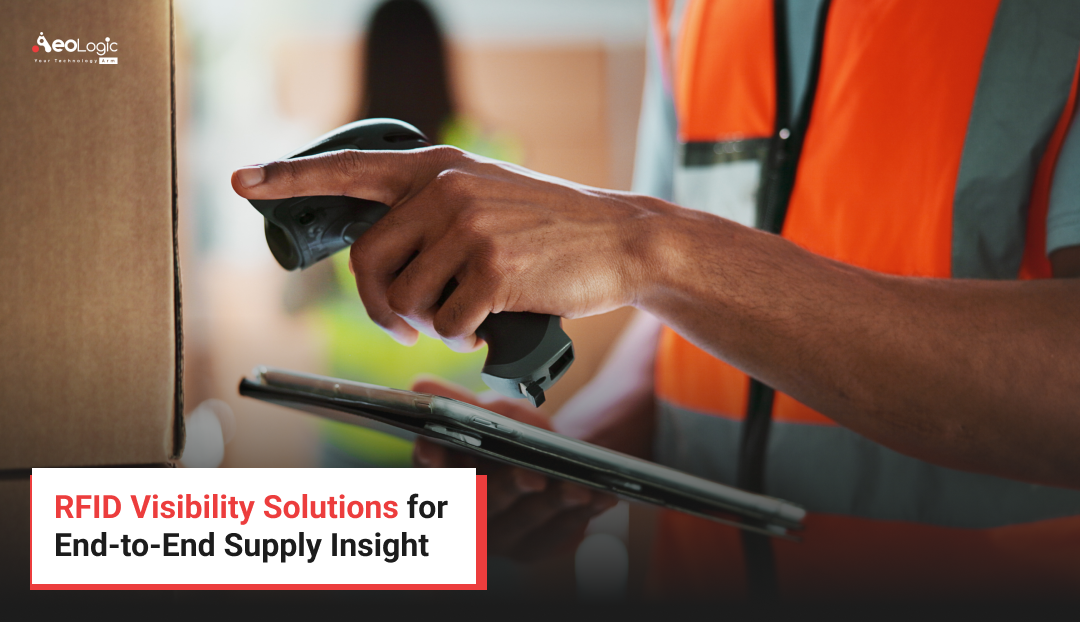IoT technology is advancing daily with new solutions as its use cases are growing rapidly. The other technologies generally depend on IoT to perform operations, which makes IoT a great technology for every aspect. Among all the benefits and use cases of IoT, the asset tracking solutions are the ones that have been impressive since their development.
Businesses and enterprises have made great use of asset-tracking solutions to improve their traceability, monitoring, and visibility among various operations that help them to stay ahead of their counterparts as well as boost digital transformation.
IoT-based asset tracking systems are essential to modern business because they offer real-time visibility, increase operational efficiency, and lower losses. By monitoring location, condition, and usage, they assist companies in managing assets across a range of sectors, from manufacturing and shipping to healthcare and retail.
Better decision-making, more efficient use of resources, and enhanced overall company performance are the results of IoT-powered asset-tracking solutions. The best IoT solutions powerfully bring innovation, advancements, and digitalization among enterprises that making it necessary for today’s world.
Global Market Size And Key Stats
The IoT-based asset tracking and monitoring market size has grown strongly in recent years. It will grow from $5.06 billion in 2024 to $5.56 billion in 2025 at a compound annual growth rate (CAGR) of 9.9%. The IoT-based asset tracking and monitoring market size is expected to see rapid growth in the next few years.
It will grow to $9.62 billion in 2029 at a compound annual growth rate (CAGR) of 14.7%.
A report suggests that 84% of businesses could achieve significant cost savings and efficiency improvements by adopting IoT technologies for asset tracking.
Explore more: How IoT Software Solutions Are Transforming Enterprises
What Are IoT-Based Asset Tracking Solutions For Enterprise Business?
![]()
Source: IHS, globalsources.com
IoT-based asset tracking solutions refer to the systems or solutions that involve IoT-powered devices and sensors to track and gather information about the asset’s conditions, locations, and status in real-time. This enables businesses, enterprises, and various industries to enhance their asset optimization, real-time decision-making, and efficiency.
The various industries like healthcare, manufacturing, education, and retail benefit from the IoT asset tracking solutions. For example, the healthcare industry can remotely monitor patients via IoT wearable devices, the manufacturing industry enables predictive maintenance, and the retail industry can enable inventory tracking.
The Internet of Things (IoT) is facilitated by a variety of sensors and processors that transmit data to the cloud via a variety of connectivity methods, including Bluetooth, WiFi, cellular networks, LPWAN, RFID, and satellite. After the data is collected, it is processed by software, and the end-user receives insights via an alert.
The Internet of Things is based on automation and requires no human interaction. It is transformative for businesses, particularly when used to support asset tracking, which is the process of tracking and managing physical assets as they travel from one location to another.
However, the many modes of connectivity enhance the usage of IoT devices for asset tracking. IoT technology, which uses tags like barcodes, GPS, and RFID, can help to streamline and increase the efficacy of tracking company assets by lowering the risk of theft, loss, or damage.
Explore more: Benefits of Custom IoT Solutions in Businesses
Benefits of IoT-Based Asset Tracking Solutions for Enterprise Businesses
There are various benefits of IoT-based asset-tracking solutions for enterprise businesses. Here are a few key benefits mentioned below.
Reduces Underutilized Assets
In traditional asset management and tracking, there could be various assets that remain unutilized. It leads to both the loss of valuable resources and increased costs for businesses. However, with IoT asset tracking solutions, businesses may have proper information about the asset usage that helps them to fully utilize each and every asset.
Reduces Search Time And Downtime
The IoT-powered asset tracking solutions can track the location of assets and equipment within an organization. This prevents the waste of time searching for any asset manually and also minimizes downtime. The assets and equipment continuously perform operations that boost the efficiency of the businesses. This also boosts the overall revenue generation for the business which helps them to build stronger infrastructure. 
Minimized Inventory Shrinkage
Manually or traditional methods of asset tracking can increase inventory shrinkage due to theft, loss. The IoT-powered asset tracking solutions provide the information, status, and location of assets and stock in the inventory. This reduces the chances of theft and losing any items. This reduces the unnecessary expenses as well as the inventory shrinkage.
Also Read: How IoT Solutions Drive Innovation Across Industries
Extended Asset Lifespan
The IoT-powered asset tracking solutions can enable various benefits for businesses and organizations. These solutions can enable predictive maintenance, reduce replacement costs, prevention before any potential damage, etc. This not only enhances the asset optimization but also enhances or extends their lifespan.
Geofencing
Geofencing is another important benefit of IoT-powered asset tracking solutions as it further improves security, uses geofencing to establish virtual limits, and gets notifications if assets stray from approved routes or areas. This helps businesses to maintain their integrity and also enhances customers’ trust in the business.
Explore more: A Step-by-Step Guide to Choosing the Right IoT Services
Cost to Implement IoT-Based Asset Tracking Solutions
To get the estimated cost of implementation of IoT-based asset tracking solutions, you need to first analyze the various factors like complexity, number of assets to track, and types of software to integrate. Generally, the cost can range from $20,000 to $80,000 for a basic solution, potentially reaching $150,000 to $250,000 or even higher for more complex implementations. Here is a cost breakdown of various IoT-based asset solutions mentioned below.
Cost Breakdown:
-
- Proof of Concept (PoC): Typically ranges from $5,000 to $20,000.
-
- Minimum Viable Product (MVP): Usually ranges from $20,000 to $80,000.
-
- Large-Scale Solutions: Can cost from $200,000 to a million dollars.
-
- IoT Sensors: The cost of individual sensors can start from $0.44, but the overall cost depends on the type, characteristics, and capabilities.
Overall, it’s not possible to get an exact cost of implementation of IoT-based asset tracking solutions as it always varies according to the factors, regions, and device amounts. So, always evaluate every factor to get the exact cost for your business.
Looking for? Custom IoT Solutions For Your Business Operations
How to Create an IoT-Based Asset Management Software Solution?
Creating an IoT-based asset management software solution for your company is a large endeavor that takes significant time and financial investment. A successful IoT installation necessitates a deft hand and extensive experience. That is why choosing an IoT expert like Aeologic Technologies, who has the talent and tools to address your unique company needs, is critical.
In this section, we’ll give you a development plan and explain all you need to know to get started with asset management software development.
Step 1. Define your Requirements
The process of software development comes with a variety of poor decisions that can result in terrible failures. Therefore, you must establish a strategy before embarking on your development journey. Moreover, to formulate a strategy, it is imperative to ascertain the precise nature of your ultimate objective.
As previously mentioned, the requirements of various enterprises are distinct. Therefore, you must conduct a thorough assessment of your organization and determine precisely what your requirements are.
Which areas of discomfort are you endeavoring to alleviate?
In summary, what is the objective of your IoT asset management solution?
The foundation of your application will be established by this information, which will determine the direction of your development.
Before commencing the development process, it is frequently advantageous to compile a priority list of all the requirements that your application must satisfy. This allows you to prioritize the most important requirements, allocate the majority of your resources to them, and begin working on them. With time, you will be able to address the items that are lower on your priority list.
Step 2. Market Research
After establishing your objectives, it is imperative to identify strategies for accomplishing them. The market for IoT-based software solutions is substantial; nearly every organization is currently utilizing some form of IoT implementation. During this phase, your responsibility is to investigate these organizations and ascertain the methods by which they resolve their challenges.
The most effective companies to target are those that have encountered or still face the same challenges as you. Their implementation of the Internet of Things (IoT) can provide you with a plethora of ideas regarding what to do and what not to do. You may incorporate the successful aspects of their solution into your own and refrain from repeating their errors.
This phase will enable you to comprehend the final product’s appearance and the solution you have developed. After conducting an investigation, you can determine whether you wish to create a mobile application, cloud-based software, or custom on-premise asset management software.
It is imperative that you dedicate yourself to conducting comprehensive market research, as it will serve as the foundation for your asset management planning phase.
Step 3. Preparation
Once you have completed your preliminary investigation and have a clear understanding of your objectives, you can proceed with the solution planning process. Nevertheless, it is crucial to note that the plan you develop independently may undergo significant modifications as a result of the inputs of the IoT developers you employ.
In this phase, it is imperative to determine the type of solution that is required, whether it be a mobile application or a comprehensive software solution. Additionally, this phase necessitates the development of budgetary and time management strategies. Please be advised that in addition to the software tools, you will be required to allocate funds for hardware, including IoT sensors and IoT-based devices.
It is advisable to conduct independent research and planning prior to collaborating with an IoT specialist, as IoT implementation is a significant undertaking.
Step 4. Engaging an IoT Specialist
Many IoT specialists are available in the market, offering cost-effective consultation and development services. However, it is imperative to seek out an IoT associate who is proficient in the development of the solutions you require.
One effective approach to identify these developers is to utilize websites such as Clutch. Clutch provides a comprehensive collection of pertinent information regarding them, including their portfolio, client reviews, and experience, all of which will assist you in making a more informed decision.
Additionally, it would be advantageous to consult developer websites prior to employing them. The majority of developers who are reputable are inclined to exhibit their most noteworthy projects on these platforms, and they can assist you in making a decision. In conclusion, it is imperative to collaborate with an IoT specialist who comprehends and honors your vision and is prepared to offer high-quality development services to turn it into a reality.
Step 5. Creating Your Asset Management Solution
The development of software and mobile applications is a complex and lengthy process that necessitates numerous modifications to the initial plan and budget. However, the likelihood of a complete calamity is reduced when a development phase is well-planned and supported by a team of talented developers, designers, and QA experts.
It is always advisable to refrain from fully committing to the development process at the outset and instead request that the developer construct a proof of concept of an MVP for your solution. Your solution’s veracity will be assessed through a proof of concept (POC) or minimum viable product (MVP).
Additionally, they serve as beneficial feedback instruments. You have the option of conducting a confined demo cycle, in which you request feedback from a few employees after they have used the solution you have developed. You will determine whether you are on the correct path or if you need to start over and go back to the drawing board based on the results.
Step 6. Evaluate and Implement
It is imperative to test an IoT-based solution, as it involves a variety of hardware devices, in contrast to traditional software solutions. The absence of an asset management solution is preferable to its malfunction. Therefore, ensure that your software is free of bugs and has data security that is impenetrable.
The application can be deployed after it has been evaluated. There will be bumps in the road, and you will encounter obstacles. However, with the assistance of an appropriate IT partner, it should be feasible to establish the entire system without encountering any significant obstacles. Depending on the intricacy of your solution, it may require some time for your employees to adjust. To expedite this procedure, it may be beneficial to attend a few training sessions.
Also Read: Cost Estimation and Benefits of IoT in Software Development
Final Thoughts
IoT-powered asset tracking solutions are great tools to enhance asset management. This could be enough for the next few years, but with the increasing rate of technology and advancements, surely there will be a need to bring more potential solutions to asset tracking. The key trends could be the aspects that could fulfill the demands of the future with IoT asset-tracking solutions.
Trends like AI and ML integration for better analytics, 5G connectivity for smooth data transmission, edge computing for onsite data processing, and remote asset monitoring systems are surely going to make asset-tracking solutions more capable than ever before. Overall, businesses and enterprises have the opportunity to choose this tool before it’s too late and they fall behind the competition.
We at Aeologic Technologies know how to use the power of IoT to change your business. Our team of experienced professionals focuses on providing customized IoT solutions that meet your specific retail needs. We know how the industry works and how important technology is to its development.
Contact us now!

I’m Deepika Pandey, an SEO strategist and content writer with 6+ years of experience. I create SEO-friendly content that drives traffic and engages readers. I combine data insights with creativity to help businesses grow their online presence effectively.





